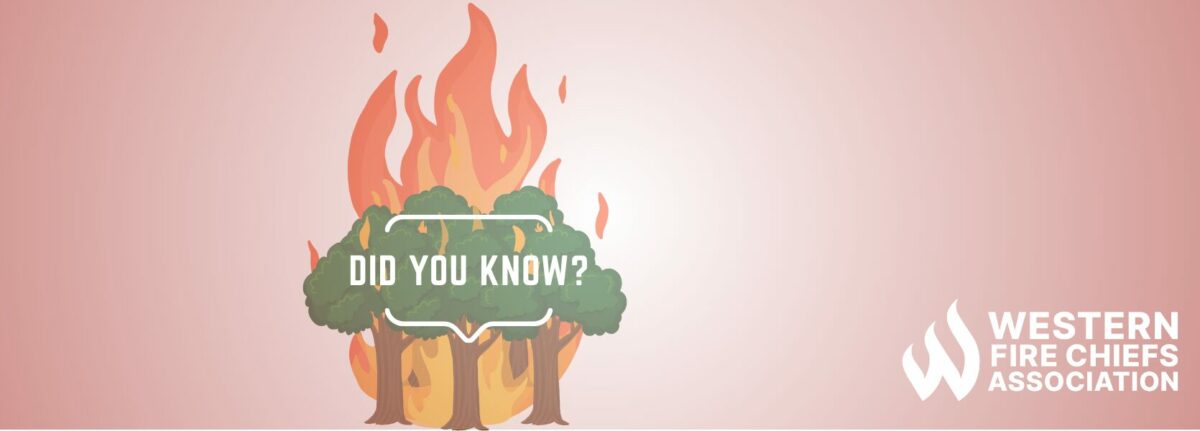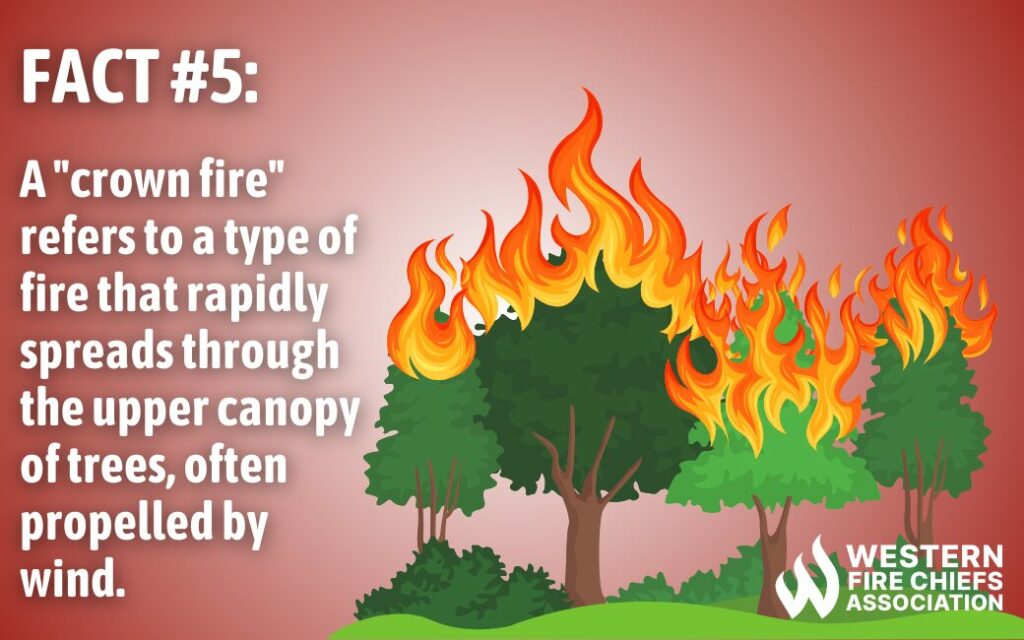Fire Pit Safety Tips
Stay safe around the campfire with tips from the Western Fire Chiefs Association. Learn essential precautions and practices for a worry-free outdoor campfire.
Discover seven interesting facts about the causes, behavior, and impact of wildfires with the experts at the Western Fire Chiefs Association.
Published:January 16, 2024
Edited:April 14, 2024

Discover seven interesting facts about the causes, behavior, and impact of wildfires with the experts at the Western Fire Chiefs Association.
As wildfires become increasingly prevalent, especially in the Western states, it is crucial to understand the factors driving their occurrence and behavior. Additionally, understanding how to mitigate the risk posed by wildfires is essential.
It is impossible for a wildfire to burn without the following three key elements: oxygen, heat, and fuel. This combination is known as the fire triangle. If any of these elements are missing or not in the correct amount, the fire will be extinguished. The fire triangle demonstrates the basic rules that control how a wildfire starts, continues, and grows.1
Lightning hits the Earth more than 8 million times every day.2 Surprisingly, about 10-20% of these lightning strikes can start fires. When lightning occurs, it releases a significant amount of energy. If the conditions are right and surrounding are dry, the lightning strike has the potential ignite fires.3
Wildfires start from the accumulation of deceased organic matter, including fallen leaves, twigs, and trees. In certain situations, the build-up of this dead material reaches a point where it generates sufficient internal heat, potentially leading to spontaneous combustion. The heightened temperatures produced through this process can then act as a catalyst, igniting the surrounding environment.4
A large wildfire, commonly known as a conflagration, possesses a remarkable capability to exert a profound influence on local weather conditions, effectively giving rise to its own atmospheric phenomena. Termed “fire weather,” this dynamic interaction involves the intense heat generated by the wildfire, initiating powerful updrafts and the formation of towering pyrocumulus or pyrocumulonimbus clouds. These fire-induced clouds, resembling conventional storm clouds, significantly impact temperature, humidity levels, and precipitation patterns in the immediate vicinity. The accompanying updrafts influence local wind patterns, potentially intensifying the fire’s spread in a self-perpetuating cycle.5

A “crown fire” refers to a type of fire that rapidly spreads through the upper canopy of trees, often propelled by wind. These fires can be challenging to control due to their ability to move quickly through the treetops. A more dangerous variation is known as a “running crown fire.” In a running crown fire, the flames burn at extremely high temperatures, travel swiftly, and can change direction unpredictably. This heightened intensity is particularly concerning as running crown fires can quickly consume the upper parts of trees, creating a faster rate of fire spread.6
The smoke generated by large-scale wildfires significantly elevates air pollution levels in affected areas, posing a substantial threat to public health. For instance, in 2019, during a season marked by severe fires, California experienced a noteworthy occurrence where 19 out of the top 20 most polluted cities in the United States were located within the state. Inhaling smoke and enduring diminished air quality can lead to minor health concerns like irritated eyes and allergy symptoms. In more critical instances, exposure to the smoke can result in severe health repercussions, potentially culminating in premature mortality. The pervasive impact of wildfires on air quality emphasizes the pressing need for proactive measures to address and mitigate the associated health risks stemming from the resultant pollution.
A great way to lower the risk of wildfires sparking in the first place is to reduce and remove ignition sources while managing and mitigating dry fuel. While it’s nearly impossible to stop lightning – and it is hard to predict where it’ll strike – adequate land management and landscape fire management planning can significantly diminish their ability to spread, therefore minimizing the damage. Lastly, considering that humans account for more than 80% of wildfires, far greater education and public awareness on proper methods of fire extinguishing is required.
Stay safe around the campfire with tips from the Western Fire Chiefs Association. Learn essential precautions and practices for a worry-free outdoor campfire.
Discover essential firework safety tips to ensure a dazzling display without accidents. Learn how to celebrate responsibly with expert guidance from WFCA.
Explore the role of AI in wildfire prediction with guidance from the WFCA. Learn how advanced algorithms and data analytics enhance early detection and response.